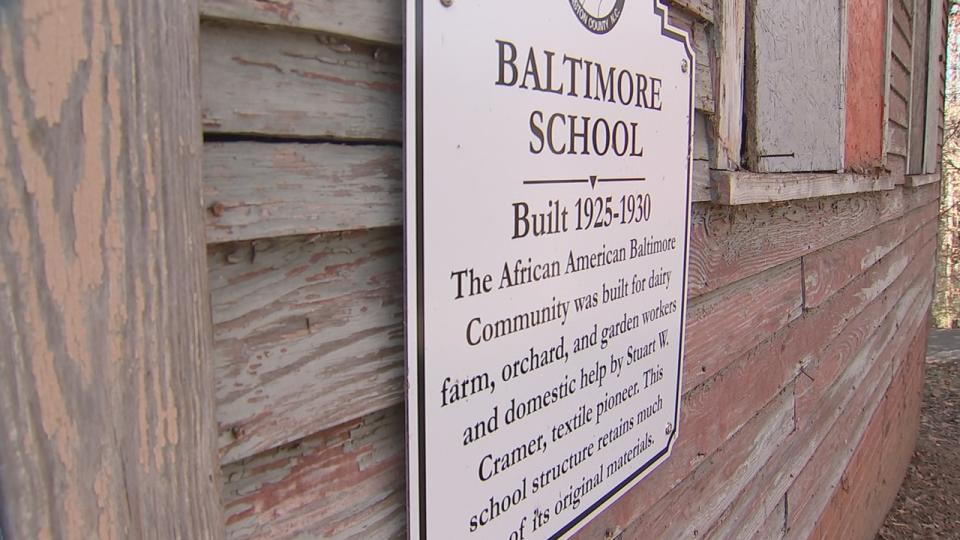‘It should never go’: Group fights to preserve historic Black school in Gaston County
A group in Gaston County is fighting to preserve a town’s last standing one-room school that served African-American children, men and women.
They worry that a vital piece of history in Cramerton’s Baltimore community could be lost.
Fred Glenn is the owner of the school. He told Channel 9′s Ken Lemon he remembered visiting the Baltimore School, which is almost 100 years old, as a child.
Glenn said being there is like connecting with an old teacher who still has a lot to share.
ALSO READ: Historically Black community in Cornelius secures state funding to preserve legacy
“It brings back memories,” Glenn said.
He brought pictures of him and his brother to show Lemon. They were from 1953, when segregation kept Black people out of most theaters so school leaders showed movies and set up their own events.
“We just kind of forget about things on the outside,” Glenn said.

The Baltimore School was more than a school. Before desegregation, it was a community center. Now, it’s an aging building with good bones, but without the outside support to keep the doors open. And it’s in one of Gaston County’s few remaining historically Black communities.
The Historic Baltimore School board of directors wants to make it a museum and open it to the public to reveal the years of experience locked behind closed doors.
“I want people to remember where they came from,” said Wendy Cauthen, who’s on the board. “I don’t want their past overlooked.”
ALSO READ: Historical marker honors Fort Mill school that served Black students during segregation
To do that, they need half a million dollars to make the building that was constructed in the 1920s meet 2022 standards.
“It should never go,” said Dr. Pierre Crawford, who’s also on the board. “We need to make sure that we keep the heritage, that we keep the memory of what happened.”
A nearly $1 million housing grant will help rebuild homes in the neighborhood, keeping the historic fashion of the old mill village. $210,000 goes to improvements at the school, which puts them at about halfway toward the goal of turning it back into the kind of community resource Fred Glenn remembers.
“I could only image how it would be,” Glenn said.
The board has applied for several grants to help pay for remodeling. They have been awarded some, but they know it’s going to take donations and community support to keep the doors open.
(WATCH BELOW: Meck County could allow historically Black neighborhood to save landmark)

